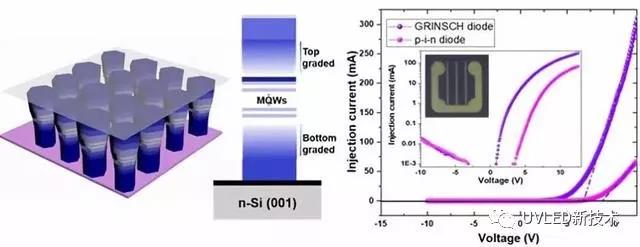Address:7th Floor, Gaofeng Building, Dalang Street, Longhua District, Shenzhen
Website:www.longstartech.com.cn
TEL:0755-2556 9680
FAX:0755-2556 6650
Mobile:13316929948(同V)
Email:James@longstartech.com.cn
Contact Person :James
Recently, a team of researchers at king abdullah's university of science and technology (KAUST) in Saudi Arabia developed a nanoscale AlGaN luminescence device.
The nanometer GRINSCH bipolar structure (GRINSCH) has been produced by the researchers with a restricted structure layer (GRINSCH) with gradual refractive index distribution. The researchers expect to be able to be used in the future in nanometer high-efficiency UV LED devices, such as laser, optical sensor, amplitude modulator and integrated optical-related devices.
 The existing AlGaN luminescence device is regarded as the UV lamp source to replace the existing UV gas laser and the UV lamp containing toxic substances. However, due to the UV laser diode in the device, the voltage needs to be at least 25 volts to operate, and the inefficiencies of the hole injection layer lead to high series resistance, resulting in limited performance. The reason is related to the P type semiconductor coating of AlGaN aluminum layer and the lack of effective cooling pipe.
The existing AlGaN luminescence device is regarded as the UV lamp source to replace the existing UV gas laser and the UV lamp containing toxic substances. However, due to the UV laser diode in the device, the voltage needs to be at least 25 volts to operate, and the inefficiencies of the hole injection layer lead to high series resistance, resulting in limited performance. The reason is related to the P type semiconductor coating of AlGaN aluminum layer and the lack of effective cooling pipe.
Compared with the original AlGaN epitaxy film, the nano-sized AlGaN can extend directly on substrates including metals due to its high surface area to volume ratio and effective stress relaxation. Metals and a metal matrix encased in silicon or sapphire provide better cooling piping during high-current operations.
In addition, the nanometer p-type semiconductor has low activation energy demand due to the addition of magnesium, so the resistance is relatively small. The team's experiments show that GRINSCH dipoles perform well in electronics and optics, and require less voltage and resistance in series than the original dipoles.

